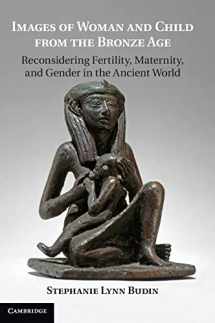
Images of Woman and Child from the Bronze Age: Reconsidering Fertility, Maternity, and Gender in the Ancient World
ISBN-13:
9780521193047
ISBN-10:
0521193044
Edition:
1
Author:
Stephanie Lynn Budin
Publication date:
2011
Publisher:
Cambridge University Press
Format:
Hardcover
390 pages
FREE US shipping
Book details
ISBN-13:
9780521193047
ISBN-10:
0521193044
Edition:
1
Author:
Stephanie Lynn Budin
Publication date:
2011
Publisher:
Cambridge University Press
Format:
Hardcover
390 pages
Summary
Images of Woman and Child from the Bronze Age: Reconsidering Fertility, Maternity, and Gender in the Ancient World (ISBN-13: 9780521193047 and ISBN-10: 0521193044), written by authors
Stephanie Lynn Budin, was published by Cambridge University Press in 2011.
With an overall rating of 3.8 stars, it's a notable title among other
books. You can easily purchase or rent Images of Woman and Child from the Bronze Age: Reconsidering Fertility, Maternity, and Gender in the Ancient World (Hardcover) from BooksRun,
along with many other new and used
books
and textbooks.
And, if you're looking to sell your copy, our current buyback offer is $0.55.
Description
This book is a study of the woman-and-child motif - known as the kourotrophos - as it appeared in the Bronze Age eastern Mediterranean. Stephanie Lynn Budin argues that, contrary to many current beliefs, the image was not a universal symbol of maternity or a depiction of a mother goddess. In most of the ancient world, kourotrophic iconography was relatively rare in comparison to other images of women and served a number of different symbolic functions, ranging from honoring the king of Egypt to adding strength to magical spells to depicting scenes of daily life. This work provides an in-depth examination of ancient kourotrophoi and engages with a variety of debates that they have spawned, including their role in the rise of patriarchy and what they say about ancient constructions of gender.


We would LOVE it if you could help us and other readers by reviewing the book
Book review

Congratulations! We have received your book review.
{user}
{createdAt}
by {truncated_author}


